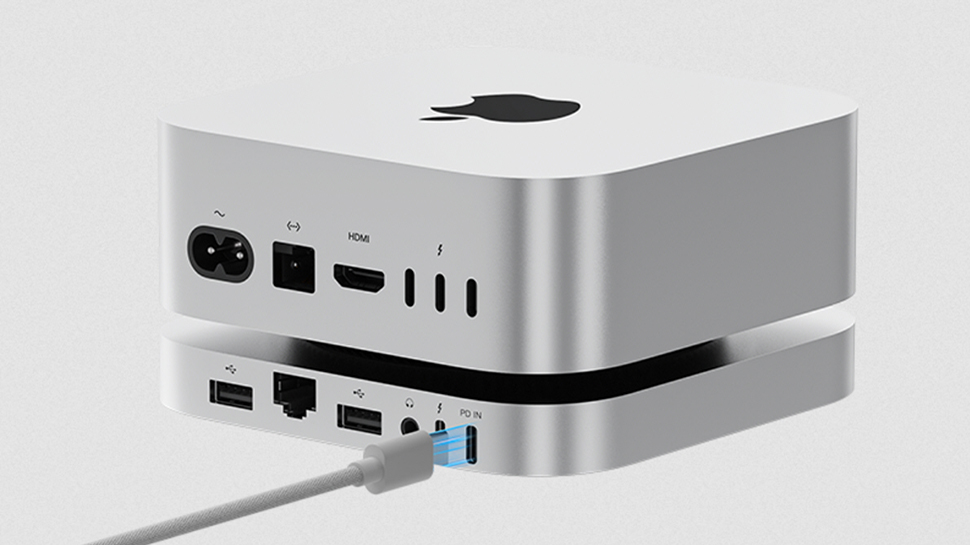The Reimagined Citadel: Finding Soul in Structure with the Modular Monolith
In the grand, ever-shifting landscape of software architecture, a silent quest perennially unfolds – a search for balance, for that elusive sweet spot where innovation can flourish without collapsing under its own weight. We, as creators of digital worlds, have journeyed from towering, singular strongholds to sprawling, interconnected metropolises. Yet, sometimes, the most profound answers lie not in the extremes, but in a thoughtful fusion of wisdom gleaned from all past endeavors. This is the story of the Modular Monolith, an architectural approach that offers a path to structured grace and sustainable growth. Echoes of the Past: The Age of the Monolithic Titans Once, in the nascent days of software development, and even persisting into much of its adolescence, the Monolith reigned supreme. Imagine a vast, ancient citadel, a single, imposing structure housing every facet of a kingdom within its formidable walls. This was the traditional monolithic application: a single, large codebase, a unified executable. In its youth, this approach possessed an alluring simplicity. All code resided in one place, making initial development and deployment seemingly straightforward. A single process meant no network calls between components, leading to low latency for internal communications. Early teams could get features out quickly, building the digital kingdom room by room. However, as these citadels grew, their very nature began to present challenges. Scaling became an all-or-nothing affair – if one part of the kingdom was under strain, the entire citadel had to be duplicated. Introducing new technologies or making significant architectural changes felt like trying to renovate a load-bearing wall in a medieval castle; the risks were immense, and the process painstakingly slow. Development teams, once able to work in concert, found themselves tripping over each other in the increasingly complex and tightly coupled corridors of the ever-expanding codebase. The "Big Ball of Mud," as it's often called, became a familiar, dreaded state. The Dazzling Fragmentation: Microservices and the Networked City As a direct response to the monolithic giants' growing pains, a new architectural paradigm emerged, shimmering with the promise of agility and independent evolution: Microservices. Picture a futuristic, sprawling city, where individual, sleek skyscrapers each perform a specialized function, all interconnected by a complex web of glowing data streams. Microservices championed the idea of breaking down large applications into small, independently deployable services. Each service would own its data, could be written in a different technology stack, and scaled independently. This brought undeniable benefits: teams could work autonomously, release cycles could be faster, and systems could be more resilient to the failure of a single component. Technology diversity flourished, and specialized services could be optimized for their specific tasks. But this dazzling, distributed future also came with its own set of complexities. The operational overhead of managing dozens, or even hundreds, of services became significant. Developers now had to contend with network latency, service discovery, distributed transactions, and the intricate dance of eventual consistency. Debugging an issue that spanned multiple services could feel like navigating a labyrinth. For many, the dream of agile independence morphed into the reality of managing a complex, distributed system, an endeavor that, for some contexts, felt like overkill. Bridging the Divide: The Modular Monolith Emerges The pendulum of architectural preference, having swung from one extreme to another, began its slow journey back, seeking a more centered, pragmatic approach. What if one could retain the operational simplicity of a monolith while embracing the organizational clarity and improved maintainability promised by modular design? This is the fertile ground from which the Modular Monolith sprouted – a design philosophy that offers a compelling middle way. Imagine not a single, undifferentiated fortress, nor a sprawling, disconnected city, but rather a grand, well-planned castle. This castle is a single, unified structure, yet its design is based on a clear blueprint, delineating distinct, self-contained sections: the keep, the barracks, the great hall, the armory. Each section has its purpose and its well-defined boundaries, but all are part of the cohesive whole. This is the essence of the Modular Monolith. It is a software application that is deployed as a single unit, yet its internal architecture is divided into distinct, loosely coupled modules. Each module has a specific responsibility, well-defined interfaces for communication, and ideally, encapsulates its own data logic. The Soul of the Structure: Core Tenets of Modularity The power of the Modular Monolith lies not just in its deployment model, but in the discipl

In the grand, ever-shifting landscape of software architecture, a silent quest perennially unfolds – a search for balance, for that elusive sweet spot where innovation can flourish without collapsing under its own weight. We, as creators of digital worlds, have journeyed from towering, singular strongholds to sprawling, interconnected metropolises. Yet, sometimes, the most profound answers lie not in the extremes, but in a thoughtful fusion of wisdom gleaned from all past endeavors. This is the story of the Modular Monolith, an architectural approach that offers a path to structured grace and sustainable growth.
Echoes of the Past: The Age of the Monolithic Titans
Once, in the nascent days of software development, and even persisting into much of its adolescence, the Monolith reigned supreme. Imagine a vast, ancient citadel, a single, imposing structure housing every facet of a kingdom within its formidable walls.
This was the traditional monolithic application: a single, large codebase, a unified executable. In its youth, this approach possessed an alluring simplicity. All code resided in one place, making initial development and deployment seemingly straightforward. A single process meant no network calls between components, leading to low latency for internal communications. Early teams could get features out quickly, building the digital kingdom room by room.
However, as these citadels grew, their very nature began to present challenges. Scaling became an all-or-nothing affair – if one part of the kingdom was under strain, the entire citadel had to be duplicated. Introducing new technologies or making significant architectural changes felt like trying to renovate a load-bearing wall in a medieval castle; the risks were immense, and the process painstakingly slow. Development teams, once able to work in concert, found themselves tripping over each other in the increasingly complex and tightly coupled corridors of the ever-expanding codebase. The "Big Ball of Mud," as it's often called, became a familiar, dreaded state.
The Dazzling Fragmentation: Microservices and the Networked City
As a direct response to the monolithic giants' growing pains, a new architectural paradigm emerged, shimmering with the promise of agility and independent evolution: Microservices. Picture a futuristic, sprawling city, where individual, sleek skyscrapers each perform a specialized function, all interconnected by a complex web of glowing data streams.
Microservices championed the idea of breaking down large applications into small, independently deployable services. Each service would own its data, could be written in a different technology stack, and scaled independently. This brought undeniable benefits: teams could work autonomously, release cycles could be faster, and systems could be more resilient to the failure of a single component. Technology diversity flourished, and specialized services could be optimized for their specific tasks.
But this dazzling, distributed future also came with its own set of complexities. The operational overhead of managing dozens, or even hundreds, of services became significant. Developers now had to contend with network latency, service discovery, distributed transactions, and the intricate dance of eventual consistency. Debugging an issue that spanned multiple services could feel like navigating a labyrinth. For many, the dream of agile independence morphed into the reality of managing a complex, distributed system, an endeavor that, for some contexts, felt like overkill.
Bridging the Divide: The Modular Monolith Emerges
The pendulum of architectural preference, having swung from one extreme to another, began its slow journey back, seeking a more centered, pragmatic approach. What if one could retain the operational simplicity of a monolith while embracing the organizational clarity and improved maintainability promised by modular design? This is the fertile ground from which the Modular Monolith sprouted – a design philosophy that offers a compelling middle way.
Imagine not a single, undifferentiated fortress, nor a sprawling, disconnected city, but rather a grand, well-planned castle. This castle is a single, unified structure, yet its design is based on a clear blueprint, delineating distinct, self-contained sections: the keep, the barracks, the great hall, the armory. Each section has its purpose and its well-defined boundaries, but all are part of the cohesive whole.
This is the essence of the Modular Monolith. It is a software application that is deployed as a single unit, yet its internal architecture is divided into distinct, loosely coupled modules. Each module has a specific responsibility, well-defined interfaces for communication, and ideally, encapsulates its own data logic.
The Soul of the Structure: Core Tenets of Modularity
The power of the Modular Monolith lies not just in its deployment model, but in the disciplined application of key software design principles:
- Strong Encapsulation: Each module is a black box to the others. Its internal workings, data structures, and implementation details are hidden. Modules interact only through explicitly defined public interfaces or APIs (which, in this context, are typically in-process function/method calls, not network requests). This prevents the tendrils of one module from creeping into the internals of another, maintaining clarity and reducing unintended side effects.
- Explicit Dependencies: The relationships between modules are clearly stated and managed. There's no hidden "spaghetti" of connections. This makes it easier to understand the system's architecture, trace data flows, and assess the impact of changes.
- Well-Defined Boundaries: The lines separating modules are respected. This isn't just a suggestion; it's a fundamental aspect of the architecture. These boundaries are often enforced through code structure (e.g., separate packages, namespaces, or even compiler checks in some languages).
- Cohesion within Modules, Coupling between them: Each module should be highly cohesive, meaning its internal components are strongly related and focused on a single area of responsibility. Conversely, coupling between modules should be low, minimizing dependencies and allowing modules to evolve more independently.
Think of it like a beautifully organized beehive. Each hexagonal comb section is a distinct unit, serving a specific purpose within the hive. All sections work together in harmony, contributing to the overall function of the colony, yet each is self-contained and clearly delineated.
The Harmonious Blend: Benefits of the Modular Monolith
Adopting a Modular Monolith approach can yield a rich tapestry of benefits, weaving together advantages from both its monolithic and microservice predecessors:
- Simplicity of Deployment and Operations: Like a traditional monolith, it’s typically a single artifact to deploy and manage. There's no need for complex service discovery, distributed configuration management, or inter-service networking orchestration, which drastically simplifies the operational landscape compared to microservices.
- Improved Code Organization and Maintainability: The explicit module boundaries prevent the codebase from degrading into a "Big Ball of Mud." It becomes easier to navigate, understand, and modify, as developers can focus on specific modules without needing to grasp the entire system in minute detail.
- Enhanced Developer Productivity: Teams can often work on different modules with a degree of parallelism, reducing contention and merge conflicts common in large, undifferentiated codebases. The local development experience is also simpler – run one application, not a constellation of services.
- Clear Path for Evolution: Well-defined modules are inherently easier to refactor or even replace. If a particular module becomes a bottleneck or needs a technological overhaul, it can be addressed with less risk to the rest of the system.
- A Stepping Stone to Microservices (If Needed): Should the need arise to scale out a specific piece of functionality or isolate it for business reasons, a well-factored module within a Modular Monolith is a prime candidate for extraction into a separate microservice. The hard work of defining its boundaries and API has already been done.
- Reduced Latency: Inter-module communication happens in-process, via direct method or function calls, which is orders of magnitude faster and more reliable than network calls between distributed services.
Finding Your Fit: When Does the Modular Monolith Shine?
The Modular Monolith isn't a universal panacea, but it offers a compelling solution in many common scenarios:
- Startups and New Product Development: When speed of initial development and simplicity are paramount, but you want to lay a foundation for future growth and maintainability without the immediate overhead of microservices.
- Medium-Sized Applications: For applications that have grown beyond trivial complexity but do not yet warrant the full operational burden of a distributed microservices architecture.
- Refactoring Existing Monoliths: As a strategy to incrementally improve the structure and reduce the technical debt of an existing "Big Ball of Mud" monolith, by gradually carving out and enforcing module boundaries.
- Teams Prioritizing Operational Simplicity: When the team size or operational expertise makes managing a distributed system a significant challenge.
The Architect's Craft: Discipline and Vision
Building a successful Modular Monolith isn't just about drawing lines on an architectural diagram; it requires ongoing discipline from the development team. Enforcing module boundaries, diligently crafting clear and stable internal APIs, and resisting the temptation to create "shortcut" dependencies that violate modular principles are crucial.
Tooling and language features can aid this endeavor. Java's module system (Project Jigsaw), .NET assemblies, Python packages, and even just rigorous adherence to namespacing conventions and thoughtful project structuring can provide the necessary scaffolding. But ultimately, it’s a mindset—a commitment to building for clarity and evolvability within a unified deployment.
Conclusion: The Soulful Structure
The journey of software architecture is one of continuous learning and adaptation. The Modular Monolith stands as a testament to this evolution, offering a pragmatic and powerful approach that balances the simplicity of a single deployable unit with the organizational rigor of modular design. It’s a way to build systems that are not just functional, but also understandable, maintainable, and capable of gracefully evolving over time.
It reminds us that the soul of good architecture lies not in blindly following trends, but in deeply understanding the trade-offs and choosing the structure that best serves the context, the team, and the long-term vision of the product. The Modular Monolith, with its blend of focused strength and internal grace, provides a compelling blueprint for building software that is both robust and adaptable – a reimagined citadel for the modern age.













































































































































































![[The AI Show Episode 151]: Anthropic CEO: AI Will Destroy 50% of Entry-Level Jobs, Veo 3’s Scary Lifelike Videos, Meta Aims to Fully Automate Ads & Perplexity’s Burning Cash](https://www.marketingaiinstitute.com/hubfs/ep%20151%20cover.png)
























































































































![[FREE EBOOKS] Solutions Architect’s Handbook, Continuous Testing, Quality, Security, and Feedback & Four More Best Selling Titles](https://www.javacodegeeks.com/wp-content/uploads/2012/12/jcg-logo.jpg)





![From electrical engineering student to CTO with Hitesh Choudhary [Podcast #175]](https://cdn.hashnode.com/res/hashnode/image/upload/v1749158756824/3996a2ad-53e5-4a8f-ab97-2c77a6f66ba3.png?#)






































































































































_Michael_Vi_Alamy.jpg?width=1280&auto=webp&quality=80&disable=upscale#)












































































































![UGREEN FineTrack Smart Tracker With Apple Find My Support Drops to $9.99 [50% Off]](https://www.iclarified.com/images/news/97529/97529/97529-640.jpg)

![watchOS 26 May Bring Third-Party Widgets to Control Center [Report]](https://www.iclarified.com/images/news/97520/97520/97520-640.jpg)










































































